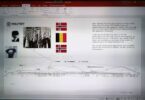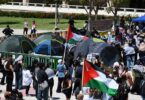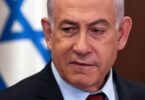M Khalid Mairaj Abbasi
The only guerilla war against British imperialism in Sindh was waged by Hur community. Hundreds of Hur fighters sacrificed their lives and properties for their homeland. Hur freedom fighters struggled and resisted for one hundred years till the time Britishers left the subcontinent in 1947.
Pir Pagaro-1 Syed Sibghatullah Shah Rashidi named his devotees with HUR and ordered them to be alert, take arms to defend motherland against nafareous designs of Ranjit Singh of Punjab and to foil the ill intentions of British colonial forces.
Just seventeen years before the invasion of British army, Syed Ahmed Shaheed Barelvi (1786-) on his way to Balalkot visited Pir jo Goth in 1826 AD and called on PIr Pagaro-I Syed Subghatullah Shah Rashidi (1780-1831 AD). The Pir extended support to him in the form of 500 soldiers, weapons, boats and assisted him financially to fight against Sikh regime at Balakot where he embraced martyrdom with his soldiers in a furious war. He wrote letters to Hur community across Sindh,Thar desert, Run of Kuch and Rajistan India to prepare for the Jihadh.
When British forces conquered Sindh in 1843, the ruler of Mirpurkhas Mir Sher Mohammad Talpur known as Sher-e-Sindh started guerilla war against them. After ten years he was martyred. Sher-e-Sindh was devotee of Pir Pagaro. That’s why, Mir Ali Murad Talpur Ruler of Khairpur State warned the English forces that it was Pir Pagro, not Sher-e-Sindh, who was fighting you.
British government had the confirm reports of strength and following of the spiritual seat of Pir Pagaro. It is reported that all Pirs and Mirs of Sindh attended the Darbar on May 24, 1844 to show allegiance to the British Crown except for Syed Ali Gohar Shah Rashidi (1816-1847) Pir Pagaro II. Sensing possible resistance from Hurs, the government kept a vigilant eye on Pagaro and the Hur community.
It is pertinent to mention that Hur movement is divided into two phases; first movement from 1843 to 1896 and second movement from 1040 to 1952 AD. Let us have a glance on both movements.
1st Hur Movement (1843-1896)
First Hur uprising began in 1869 led by Darya Khan Nizamani against British forces who was detained in Kot Diji Fort at Khairpur wherefrom he fled and then martyred. later on, Bachu Badshah and Piru Wazir along with his twelve companions called Behrootia in Sindhi established a parallel government called Sanghar Sarkar for eight years from 1888 to 1896 at Makhi forest in district Sanghar, Sindh. Makhi forest – a cluster of 200 lakes and spread over 1,124 miles, remained their main hideout during both Hur movements.
The British administration including William Henry Lucas Deputy Commissioner Tharparkar, notorious cruel Inspector Police Jula Singh and others used all tactics against them but failed to overpower Sanghar Sarkar. Jula Singh was later killed along with his other policemen by Hurs in an ambush. The British government left no stone unturned to either kill or arrest Bachu Badshah and Piru Wazir but to no avail. As a last resort, British government put pressure on their spiritual leader Pir Pagaro to direct Bachu Badshah to surrender. In the meanwhile, the cases were lodged against Pir Pagaro on false allegations to bow him down.
Simultaneously, he was stopped to visit Hur dominant districts as his visits were, supposedly, giving impetus to resistance against the government. Many a Hur was arrested and put behind the bar in Jails. Eleven concentration camps, reportedly, were established in India for Hur captives. Some of them were sent to Kala Pani “Andoman” Poona and other Indian Jails. Govt put pressure on the Pir and promised general amnesty to those who will lay the arms down. In those days, a delegation of notables met Pir Sahib. On their request the Pir directed Bachu Badshah to fight unto death or surrender. Piru Wazir attacked British army and fought unto death. It is said that Bachu was on his visit to India when he came back he received the message of his spiritual leader Syed Shah Mardan Shah Pir Pagaro-V to surrender. He and his five companions surrendered but later on were publicly hanged in Sanghar city on June 10, 1896. Thus, the movement cooled down for years.
The most of the historians and Hurs opine that Pir Pagaro-II Syed Ali Gohar Shah known as “Asghar Saeen” was secretly poisoned by British government.
Syed Hizbullah Shah Rashidi Pir Pagaro III (1890 AD) wrote a Letter in Persian language to Khalifa Sultan Abdul Hameed Pasha of Turkey to draw his attention towards the atrocities of British invaders and urged him to play his role. Pir Syed Ali Gohar Shah-II Pir Pagaro-IV (1858-1896 AD) and Syed Shah Mardan Shah-I Pir Pagaro-V (1860-1921 AD) avoided agitational and confrontationist policy towards British Government throughout their lives with few exceptions without compromising their religious dignity and personal pump and show.
It is worth mentioning thatin order to bring Hurs under pressure, a large number of retired army personnel was settled in Sanghar. British Army Officer Mr. James brought a large number of Punjabis, Pathans, and Baloch people to settle near Hurs. The people of Nawab Shahbaz Khan Bugti were too settled there.
The settlers were allotted the lands and properties which were confiscated from Hur community.There were about 200 Chaks which were developed under supervision of the Military. In Punjabi language, Chak means a village. Each Chak comprised 80 blocks spread over 1300 acres of land.
Eminent politician Sardar Sher Baz Mazari writes in his autobiography that the English sought help from Bahram Khan Mazari to crush the Hur rebellion but he refused and then the elders of Nawab Akbar Bugti supported the English forces and in return they were granted 23,000 Acres of land in Sanghar area.
Moreover, British authorities closed Dim Canal for ever to punish Hurs of Makhi area who used to cultivate their crops taking water from it.
2nd Hur Movement (1941-1952)
Second Hur movement started with the arrest of Syed Sibghatullah Shah Pir Pagaro-VI (1909-1943 AD) who is lovingly called Sureh Badshah which means a brave King in Sindhi language.
To sum up, on the death of Syed Shah Mardan Shah Pir Pagaro-V, his minor son Syed Sibghatullah Shah succeeded him. British government tried to befriend young Pagaro Syed Sibghatullah Shah Rashidi-VI by presenting him with sword and a title through Deputy Commissioner Sukkur in recognition of his services and security provided to Hindus during Manzalgah Masjid riots at Sukkur. He categorically refused to accept saying that he needed not any title or gift from the government as Allah had gifted him with the title of Pagaro and …. The British government decided to eliminate him.
To Be Continued….







